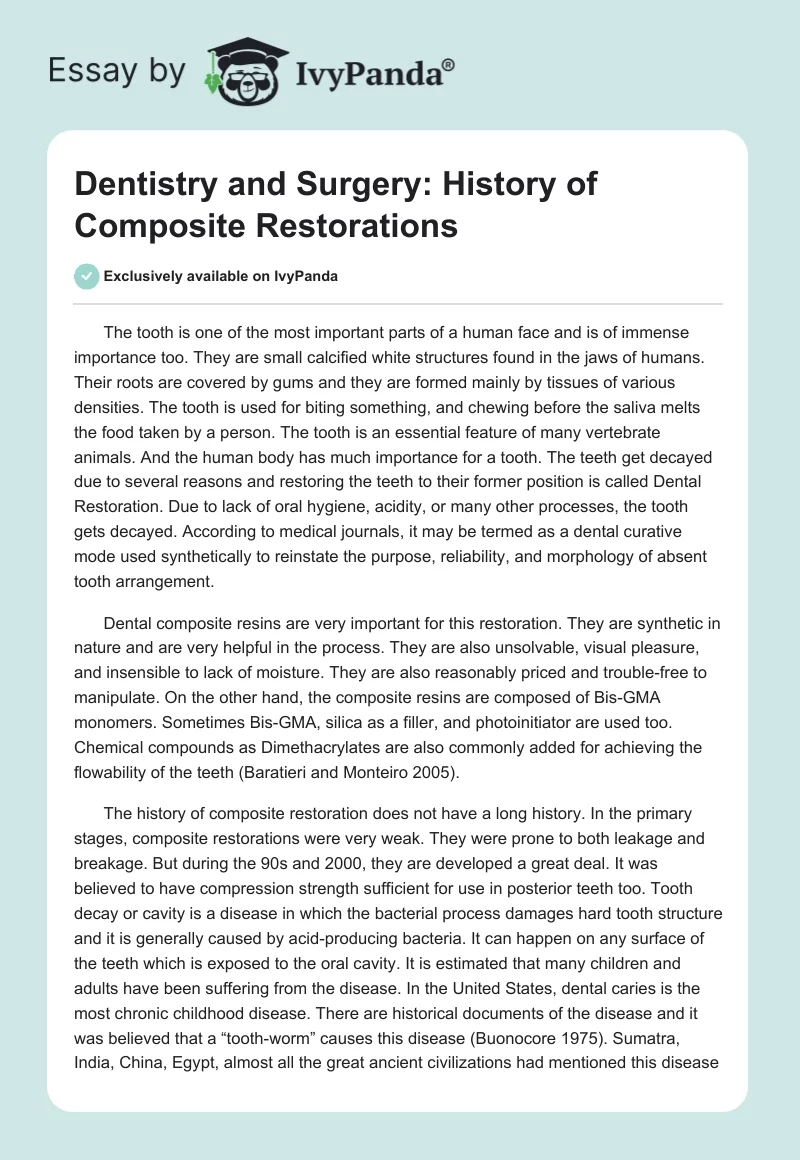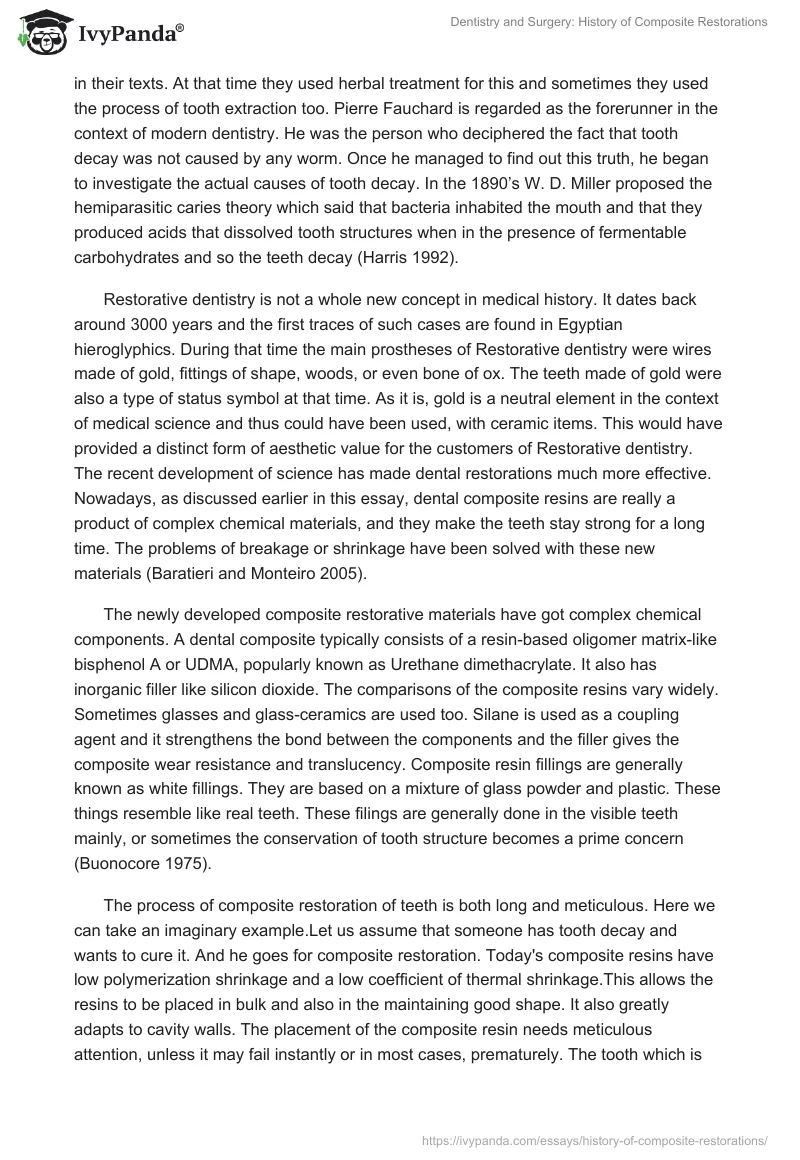The tooth is one of the most important parts of a human face and is of immense importance too. They are small calcified white structures found in the jaws of humans. Their roots are covered by gums and they are formed mainly by tissues of various densities. The tooth is used for biting something, and chewing before the saliva melts the food taken by a person. The tooth is an essential feature of many vertebrate animals. And the human body has much importance for a tooth. The teeth get decayed due to several reasons and restoring the teeth to their former position is called Dental Restoration. Due to lack of oral hygiene, acidity, or many other processes, the tooth gets decayed. According to medical journals, it may be termed as a dental curative mode used synthetically to reinstate the purpose, reliability, and morphology of absent tooth arrangement.
Dental composite resins are very important for this restoration. They are synthetic in nature and are very helpful in the process. They are also unsolvable, visual pleasure, and insensible to lack of moisture. They are also reasonably priced and trouble-free to manipulate. On the other hand, the composite resins are composed of Bis-GMA monomers. Sometimes Bis-GMA, silica as a filler, and photoinitiator are used too. Chemical compounds as Dimethacrylates are also commonly added for achieving the flowability of the teeth (Baratieri and Monteiro 2005).
The history of composite restoration does not have a long history. In the primary stages, composite restorations were very weak. They were prone to both leakage and breakage. But during the 90s and 2000, they are developed a great deal. It was believed to have compression strength sufficient for use in posterior teeth too. Tooth decay or cavity is a disease in which the bacterial process damages hard tooth structure and it is generally caused by acid-producing bacteria. It can happen on any surface of the teeth which is exposed to the oral cavity. It is estimated that many children and adults have been suffering from the disease. In the United States, dental caries is the most chronic childhood disease. There are historical documents of the disease and it was believed that a “tooth-worm” causes this disease (Buonocore 1975). Sumatra, India, China, Egypt, almost all the great ancient civilizations had mentioned this disease in their texts. At that time they used herbal treatment for this and sometimes they used the process of tooth extraction too. Pierre Fauchard is regarded as the forerunner in the context of modern dentistry. He was the person who deciphered the fact that tooth decay was not caused by any worm. Once he managed to find out this truth, he began to investigate the actual causes of tooth decay. In the 1890’s W. D. Miller proposed the hemiparasitic caries theory which said that bacteria inhabited the mouth and that they produced acids that dissolved tooth structures when in the presence of fermentable carbohydrates and so the teeth decay (Harris 1992).
Restorative dentistry is not a whole new concept in medical history. It dates back around 3000 years and the first traces of such cases are found in Egyptian hieroglyphics. During that time the main prostheses of Restorative dentistry were wires made of gold, fittings of shape, woods, or even bone of ox. The teeth made of gold were also a type of status symbol at that time. As it is, gold is a neutral element in the context of medical science and thus could have been used, with ceramic items. This would have provided a distinct form of aesthetic value for the customers of Restorative dentistry. The recent development of science has made dental restorations much more effective. Nowadays, as discussed earlier in this essay, dental composite resins are really a product of complex chemical materials, and they make the teeth stay strong for a long time. The problems of breakage or shrinkage have been solved with these new materials (Baratieri and Monteiro 2005).
The newly developed composite restorative materials have got complex chemical components. A dental composite typically consists of a resin-based oligomer matrix-like bisphenol A or UDMA, popularly known as Urethane dimethacrylate. It also has inorganic filler like silicon dioxide. The comparisons of the composite resins vary widely. Sometimes glasses and glass-ceramics are used too. Silane is used as a coupling agent and it strengthens the bond between the components and the filler gives the composite wear resistance and translucency. Composite resin fillings are generally known as white fillings. They are based on a mixture of glass powder and plastic. These things resemble like real teeth. These filings are generally done in the visible teeth mainly, or sometimes the conservation of tooth structure becomes a prime concern (Buonocore 1975).
The process of composite restoration of teeth is both long and meticulous. Here we can take an imaginary example.Let us assume that someone has tooth decay and wants to cure it. And he goes for composite restoration. Today’s composite resins have low polymerization shrinkage and a low coefficient of thermal shrinkage.This allows the resins to be placed in bulk and also in the maintaining good shape. It also greatly adapts to cavity walls. The placement of the composite resin needs meticulous attention, unless it may fail instantly or in most cases, prematurely. The tooth which is going under the procedure must be kept completely dry during the process, or the resin would likely to fail to accustom with the targeted tooth, and the process would fail ultimately. The composites are placed in the teeth while in a soft dough like state. The resin hardens when it is exposed to light of a certain blue wavelength. The light often does not penetrate more than 2-3 mm into the composite, so it takes a lot of time to harden. In case too thick resin is put inside the resin will not become solid and become partially soft. This has got some side effects too. The soft un-polymerized resin will irritate the person who has done it in his teeth. It may kill the nerves inside the teeth structure, which could be also a dangerous thing in any case. To make a correct amount of filling needs ultimate precision. If the filling is slightly more than required it might make irritation while chewing foods. The tooth that has undergone treatment may lose chewing sensitivity ultimately. It has been that a perfectly placed tooth can last for 10 years in most cases (Buonocore 1975).
From the old days to the modern times the history of composite resin has gone a sea of changes. In 1992, Ruth Roy Harris stated, “Improved composite resins and adhesive materials for tooth restoration” (Harris, 1992, 337). However, with the astonishing development of science the dental restoration process gradually become composite resin based, to give the person who is suffering from dental trouble more comfort. These are problems from the end of the physician who is treating the affected teeth. Sometimes the physical conditions of the person suffering contradict with these restoration processes. These type of failures are due to impact failure from opposing teeth or high localized stresses due to hard particulates caught between the teeth, poor adhesion between the ceramic and the underlying tooth or metal support (Baratieri and Monteiro 2005).
The use is wide. For example, Periodontal disease is caused when the tissues supporting our teeth get infected attacking the gum in our mouth. The gums loose their firmness and a gap, called the sulcus, gets created between the gums and the teeth. The tissues which support out teeth start to break down due to the disease. To cure periodontal disease periodontal therapy is undertaken. It has been found that patients being treated with periodontal therapy need to stop smoking to maintain their oral health and thus, cessation of smoking should be the first step of periodontal therapy. Smoking considerably increases bleeding of the gums if the area undergoing periodontal therapy is probed. Periodontal therapy includes probing and various periodontal attachments and due to smoking the depth of probing could become compromised or the attachments may also be lost. Smokers also show a diminished response to the periodontal therapy since it is very difficult to eliminate the sub-gingival pathogens in the smokers. Under such conditions dental restoration is a prime concern.
Use of ceramics is a brand new concept here too. There is still considerable scope for the improvement of properties and microstructures of dental ceramics by mimicking the process of nature and how it created teeth. The straight benefit of the process under medical terms is improved aesthetics over the conventional incorporation techniques. After a successful restoration it is almost impossible to catch the restoration for a simple person. Micromechanical bond is the direct result of teeth with Acid etching. This allows a good bondage with tooth. It is a very good medium as an adhesion agent. Thus, it creates a well defined tooth restoration. In the process, additionally, there is every possibility that it would prevent micro leakage. However, new invention of better agents of bonding are available that are excellent medium of dentine and enamel restoration. They, however, have their disadvantages too. They are technique sensitive. Composite resins have a bad reputation of shrinking after curing. In the dental studies discussions go on about the shrinkage of composite resins after curing.
In conclusion, it should be mentioned that whatever the case may be, the introduction of composite resins in the field of dental studies, mainly in the case of dental restoration, it is really a boon. The composite resin treatment has really helped a number of patients. It produces a stronger, tougher and more durable product if placed correctly. With the advancement of science we can always hope for the best and think that this field of dental restoration become more and more perfect only to the help of the patients worldwide.
References
Baratieri, L. N., and Monteiro, S. (2005). Composite restorations in anterior teeth: fundamentals and possibilities. NY: Quintessence Editora.
Buonocore, M.G. (1975). The use of adhesives in dentistry. London: Thomas.
Harris, R.R. (1992). Dental science in a new age: a history of the National Institute of Dental Research. LA: Wiley-Blackwell.


